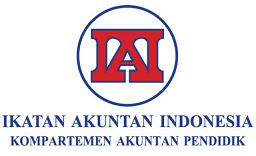IMPLEMENTASI PENGANGGARAN BERBASIS RISIKO: STUDI EMPIRIS PADA PERUSAHAAN PENGHASIL GULA KRISTAL PUTIH
Abstract
Studi ini mengkaji implementasi Penganggaran Berbasis Risiko, Risk Based Budgeting (RBB) di Perusahaan Penghasil Gula Kristal Putih, yang menjadi sebuah tuntutan karena lingkungan bisnis yang semakin kompleks dan penuh ketidakpastian. Anggaran tradisional, yang didasarkan pada proyeksi keuangan historis, sering kali gagal mengatasi sifat dinamis dari risiko modern. RBB mengintegrasikan manajemen risiko ke dalam proses penganggaran, secara proaktif mengidentifikasi, mengevaluasi, dan mengelola risiko dalam perencanaan keuangan. Studi ini mengeksplorasi metodologi, manfaat, dan tantangan penerapan RBB di Perusahaan Penghasil Gula Kristal Putih, menunjukkan potensinya untuk meningkatkan kinerja keuangan dan ketahanan operasional. Hasilnya, implementasi RBB memberikan manfaat yang siginifikan bagi perusahaan.
Kata Kunci: Anggaran Berbasis Risiko, Manajemen Risiko, Proses Penganggaran, Perencanaan Keuangan, Tata Kelola Perusahaan.
Downloads
References
Beasley, M. S., Branson, B. C., & Hancock, B. V. (2010). Developing key risk indicators to strengthen enterprise risk management. Journal of Corporate Accounting & Finance, 21(3), 35-41.
Brown, A., & Wilson, R. (2021). Integrating Risk into Budgeting. Financial Management Journal, 58(2), 89-102.
Chapman, R. J. (2011). Simple Tools and Techniques for Enterprise Risk Management. John Wiley & Sons.
Chang, D., & Tan, Y. (2020). Long-term Strategic Planning with Risk Management. Strategic Management Journal, 41(6), 1120-1138.
COSO. (2013). Enterprise Risk Management — Integrated Framework. Committee of Sponsoring Organizations of the Treadway Commission
Deloitte. (2013). Risk Assessment in Practice. Deloitte Development LLC.
EY. (2015). Risk-Based Budgeting: Driving Performance and Efficiency in the Public Sector. Ernst & Young.
Fraser, J., Simkins, B. J., & Narvaez, K. (2014). Implementing Enterprise Risk Management: Case Studies and Best Practices. John Wiley & Sons.
Garcia, M., Sanchez, R., & Lopez, T. (2021). Financial Performance through Risk-Based Budgeting. Accounting Review, 63(5), 490-505.
International Organization for Standardization. (2018). Risk Management-Guidelines, ISO 31000:2018.
Johnson, L., & Anderson, P. (2019). Supply Chain Disruptions and Risk Mitigation. International Journal of Operations & Production Management, 39(4), 567-582.
Lam, J. (2014). Enterprise Risk Management: From Incentives to Controls. John Wiley & Sons.
Lee, K., Park, J., & Kim, S. (2022). Adaptive Budgeting Strategies in Uncertain Times. Journal of Corporate Finance, 36(1), 250-267.
Libby, T., & Lindsay, R. M. (2010). Beyond Budgeting or Budgeting Reconsidered? A Survey of North-American Budgeting Practice. Management Accounting Research, 21(1), 56-75.
Mikes, A., & Kaplan, R. S. (2014). Towards a contingency theory of enterprise risk management. Accounting, Organizations and Society, 39(7), 728-744.
Miller, T., & Ross, E. (2018). Achieving Strategic Goals through KPIs. Journal of Strategic Performance, 22(4), 387-399.
Paape, L., & Speklé, R. F. (2012). The adoption and design of enterprise risk management practices: An empirical study. European Accounting Review, 21(3), 533-564.
PwC. (2017). Risk in Review: Managing Risks and Enabling Growth in the Age of Innovation. PricewaterhouseCoopers.
Smith, J. (2020). Risk Management in Modern Business. Journal of Business Management, 45(3), 123-135.

This work is licensed under a Creative Commons Attribution-NonCommercial-ShareAlike 4.0 International License.
Jurnal Akutansi dan Keuangan allows readers to read, download, copy, distribute, print, search, or link to the full texts of its articles and allow readers to use them for any other lawful purpose. The journal allows the author(s) to hold the copyright without restrictions. Finally, the journal allows the author(s) to retain publishing rights without restrictions
Authors are allowed to archive their submitted article in an open access repository
Authors are allowed to archive the final published article in an open access repository with an acknowledgment of its initial publication in this journal







